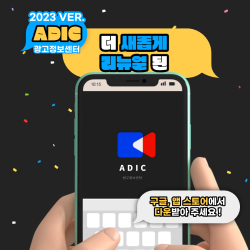지방정부의 보도 자료는 언론 보도에 어떻게 활용되었나? 제주 지역 ‘코로나19’ 관련 주요 이슈를 중심으로
자료요약
배경 및 목적 본 연구에서는 ‘코로나19’와 관련하여 제주도가 제공한 보도 자료가 어떤 내용으로 구성되었으며, 이것이 언론 보도에 어떻게 활용되었는지 살펴보고자 하였다. 방법 제주 지역에서 발생한 ‘코로나19’ 관련 주요 시점 5개를 선정하여 제주도가 제공한 보도 자료 84건과 이를 활용한 언론 보도 234건을 분석하였다. 결과 보도 자료는 정보 제공형이 가장 많았다. 모든 보도 자료는 기사체 형식으로 제공되었으며, 요약형 정보가 더 해진 경우가 가장 많았다. 84건의 보도 자료 가운데 78건이 언론 보도에 활용되었다. 보도 자료는 대부분 제 공 당일에 기사화되었다. 언론 보도의 헤드라인은 보도 자료의 헤드라인을 재구성하거나 완전히 다르게 사용 되었던 반면, 본문은 60.7%의 기사에서 보도 자료의 90% 이상이 활용되었다. 보도 자료는 단순 인용되거 나 해설, 취재 등을 통해 재구성되었다. 보도 자료 내 직접 인용구는 18.4%의 비율로 언론 보도에 사용되었 으며, 보도 자료 내 간접 인용구는 12.8%의 비율로 언론 보도에서 직접 인용구로 표시되었다. 언론 보도는 대부분 중립적인 논조를 띄고 있었다. 보도 자료와 언론 보도의 정보원은 주로 제주도, 제주도지사, 실무 부 서, 확진자였으며, 언론 보도에서는 이외에 의료 관계 기관, 확진자 소속 기관 등이 활용되었다. 보도 자료와 언론 보도 모두 정보 프레임과 경제 프레임이 많이 사용되었고, 언론 보도에서는 책임 프레임이 다소 많았다. 논의 및 결론 보도 자료에서는 시민들의 자발적 참여와 예방에 대한 정보 제공이 부족했고, 언론 보도는 확진자에 대한 차 별과 혐오를 조장한 것으로 나타났다.
Objectives We examined content characteristics of press releases provided by South Korea’s Jeju Special Self-Governing Province on COVID-19 and analyzed how their information was reported by the media. Methods We selected five main issues relating to COVID-19 that occurred in Jeju. In total, we analyzed 84 local government press releases that addressed these five issues, as well as 234 news reports that utilized these press releases. Results Most of the press releases contained provision-type information. All press releases were written in a news-article format and, in most cases, summarized information was added. Out of the 84 press releases, 78 were used for news coverage on the same day the local government provided them. These news reports either reorganized or entirely repurposed press-release headlines, but used more than 90% of their main text at a rate of 60.7%; however, the news articles still repurposed or reorganized the press-release information by adding commentary . In fact, news reports used direct quotations presented in press releases at a rate of 18.4% and indirect quotations presented in press releases as direct quotations at a rate of 12.8%. Most of the news articles exhibited a neutral tone. Moreover, most of the news sources presented in press releases and news reports were either directly from representatives of the Jeju government, such as the governor or officials in related departments, or COVID-positive persons. However, the news reports also used information from medically related organizations and organizations affiliated with the COVID-positive persons. In both the press releases and the news articles, the information frame and the economic frame were used the most, while the news articles used the responsibility frame a little more. Conclusions The press releases contained a lack of information on citizens’ voluntary participation in prevention measures, and we found that news reports promoted discrimination and prejudice against COVID-positive persons.
Objectives We examined content characteristics of press releases provided by South Korea’s Jeju Special Self-Governing Province on COVID-19 and analyzed how their information was reported by the media. Methods We selected five main issues relating to COVID-19 that occurred in Jeju. In total, we analyzed 84 local government press releases that addressed these five issues, as well as 234 news reports that utilized these press releases. Results Most of the press releases contained provision-type information. All press releases were written in a news-article format and, in most cases, summarized information was added. Out of the 84 press releases, 78 were used for news coverage on the same day the local government provided them. These news reports either reorganized or entirely repurposed press-release headlines, but used more than 90% of their main text at a rate of 60.7%; however, the news articles still repurposed or reorganized the press-release information by adding commentary . In fact, news reports used direct quotations presented in press releases at a rate of 18.4% and indirect quotations presented in press releases as direct quotations at a rate of 12.8%. Most of the news articles exhibited a neutral tone. Moreover, most of the news sources presented in press releases and news reports were either directly from representatives of the Jeju government, such as the governor or officials in related departments, or COVID-positive persons. However, the news reports also used information from medically related organizations and organizations affiliated with the COVID-positive persons. In both the press releases and the news articles, the information frame and the economic frame were used the most, while the news articles used the responsibility frame a little more. Conclusions The press releases contained a lack of information on citizens’ voluntary participation in prevention measures, and we found that news reports promoted discrimination and prejudice against COVID-positive persons.
목차
요약
문제 제기
이론적 배경
언론의 보도 자료 활용 연구
감염병에 대한 언론 보도 연구
연구문제 및 연구 방법
연구문제
연구 방법
분석 결과
보도 자료 특성
언론 보도 특성
보도 자료와 언론 보도 정보원 및 프레임
결론 및 논의
분석 결과 요약
결론 및 제언
References
Abstract
문제 제기
이론적 배경
언론의 보도 자료 활용 연구
감염병에 대한 언론 보도 연구
연구문제 및 연구 방법
연구문제
연구 방법
분석 결과
보도 자료 특성
언론 보도 특성
보도 자료와 언론 보도 정보원 및 프레임
결론 및 논의
분석 결과 요약
결론 및 제언
References
Abstract
#코로나19
#제주특별자치도
#보도자료
#언론보도











